Exploring South Africa’s Landmarks: The Union Buildings, Drakensberg Amphitheatre, and “izi Khaleni” – The Hole in the Wall at Coffee Bay
The Union Buildings, located in Pretoria, South Africa, are an iconic architectural and political symbol of the country. Here are key points about the Union Buildings:
1. **Location:** – The Union Buildings are situated on Meintjieskop hill in the city of Pretoria, the administrative capital of South Africa.
2. **Architectural Design:** – Designed by Sir Herbert Baker, a British architect, the Union Buildings were constructed between 1909 and 1913. The architectural style is neoclassical, characterized by grand columns and a monumental appearance.
3. **Government Headquarters:** – The Union Buildings serve as the official seat of the South African government and the official residence of the President of South Africa. The President’s official residence is known as the Mahlamba Ndlopfu.
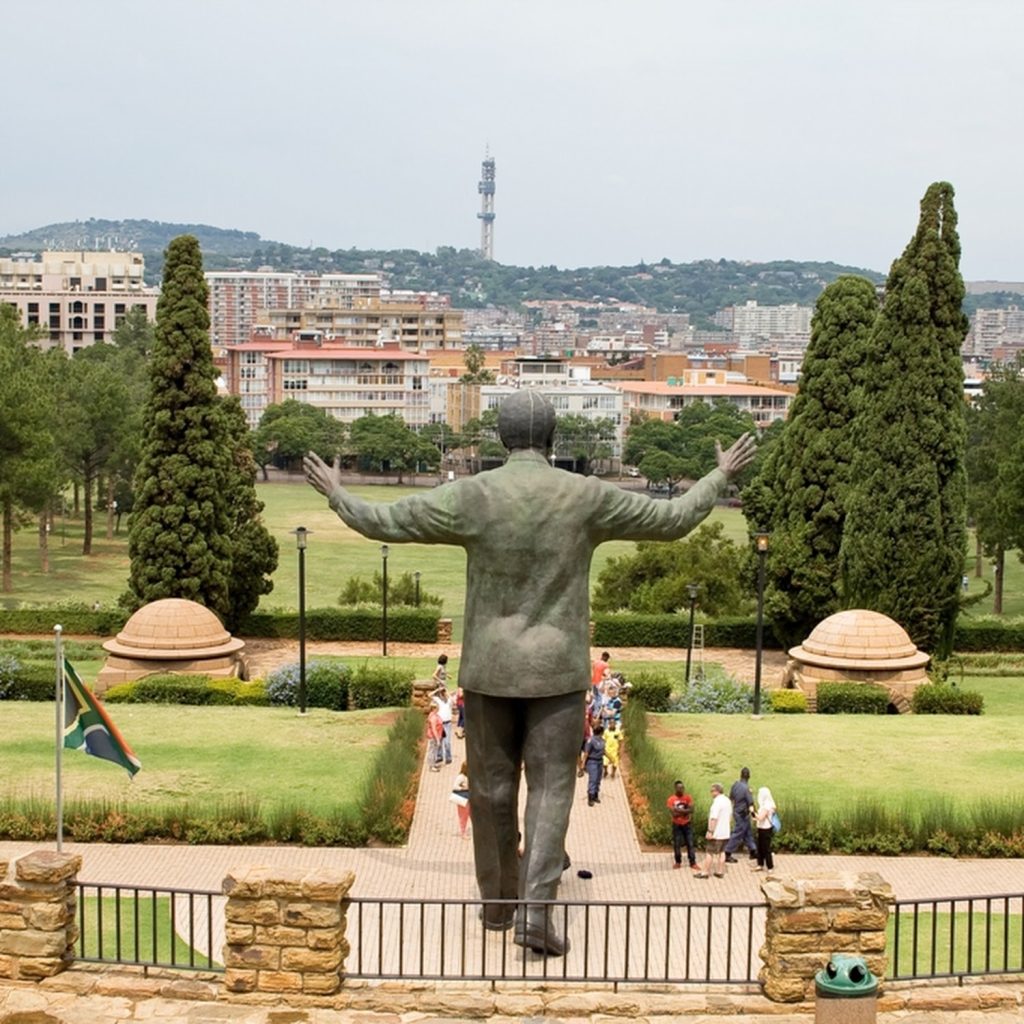
4. **Symbol of Unity:** – The name “Union Buildings” reflects the historical context of their construction. They were built to house the administrative offices of the Union of South Africa, which was established in 1910 when the country became a self-governing dominion within the British Empire.
5. **Gardens and Grounds:** – The Union Buildings are surrounded by beautiful terraced gardens and lawns, making them a popular spot for both locals and tourists. The lush lawns are often used for public events and gatherings.
6. **Statue of Louis Botha:** – A prominent feature at the Union Buildings is a bronze statue of Louis Botha, the first Prime Minister of the Union of South Africa. The statue was unveiled in 1913.
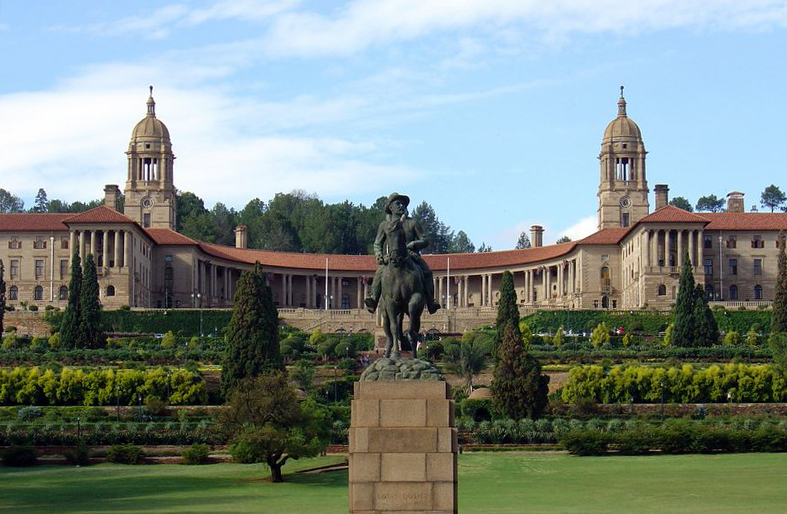
7. **Mandela Amphitheatre:** – The amphitheater in front of the Union Buildings is named the Mandela Amphitheatre, dedicated to Nelson Mandela. It is a venue for significant national events and gatherings.
8. **Protest Site and National Landmark:** – The Union Buildings have played a historic role in the country’s political landscape. In 1956, around 20,000 women marched to the Union Buildings in protest against the pass laws, an event known as the Women’s March. The buildings are a symbol of democracy and the struggle against apartheid.
9. **Public Access:** – While the Union Buildings house government offices and the President’s official residence, the gardens and outdoor areas are open to the public. Visitors can enjoy the scenic surroundings and take guided tours to learn about the history and significance of the buildings.
10. **Architectural Significance:** – The Union Buildings are considered an architectural masterpiece and an important symbol of South Africa’s transition to democracy. The buildings have been declared a national heritage site.
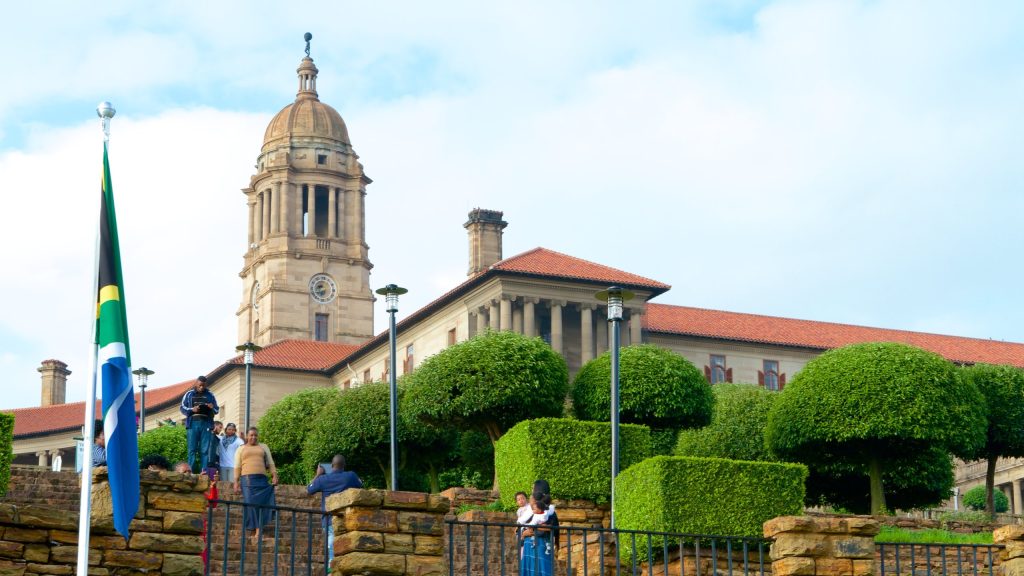
The Union Buildings stand as a symbol of unity, democracy, and the political history of South Africa. They continue to be a place of significance for national events and a testament to the country’s journey towards inclusivity and freedom.
Explore The Drakensberg Amphitheatre – A National Park in South Africa
The Drakensberg Amphitheatre is a natural geological formation located in the Royal Natal National Park in the Northern Drakensberg mountain range of South Africa. Here are key points about the Drakensberg Amphitheatre:
- Location:
- The Drakensberg Amphitheatre is situated in the Royal Natal National Park within the uKhahlamba-Drakensberg Park, a UNESCO World Heritage Site. It is in the province of KwaZulu-Natal, South Africa.
- Formation:
- The Drakensberg Amphitheatre is a massive rock wall with a semi-circular shape, resembling a natural amphitheater. The rock face is part of the Drakensberg Escarpment, and it spans approximately 5 kilometers (3.1 miles) in length.

- Height:
- The rock face of the Drakensberg Amphitheatre is known for its towering cliffs, and the Tugela Falls, one of the world’s highest waterfalls, plunges from the Amphitheatre’s cliff face. The Tugela Falls has a total height of around 948 meters (3,110 feet).
- Tugela Falls:
- The Tugela Falls is a series of five consecutive free-leaping falls. The falls are fed by the Tugela River, and the water cascades down the Amphitheatre, creating a breathtaking natural spectacle.
- Hiking and Trails:

- The Royal Natal National Park provides hiking trails for visitors to explore the Drakensberg Amphitheatre. The most famous hike is the Tugela Gorge Trail, which leads to the base of the Tugela Falls. Hikers can witness panoramic views of the Amphitheatre and experience the beauty of the surrounding Drakensberg Mountains.
- Sentinel Peak:
- Sentinel Peak is a prominent peak within the Drakensberg Amphitheatre. Hiking to the summit of Sentinel Peak is a challenging yet rewarding adventure, offering spectacular views of the Amphitheatre and the surrounding landscapes.
- Flora and Fauna:
- The Royal Natal National Park is home to diverse flora and fauna. The region is known for its unique alpine vegetation, including various species of plants adapted to the mountainous environment. Wildlife, such as eland and baboons, can be encountered in the park.
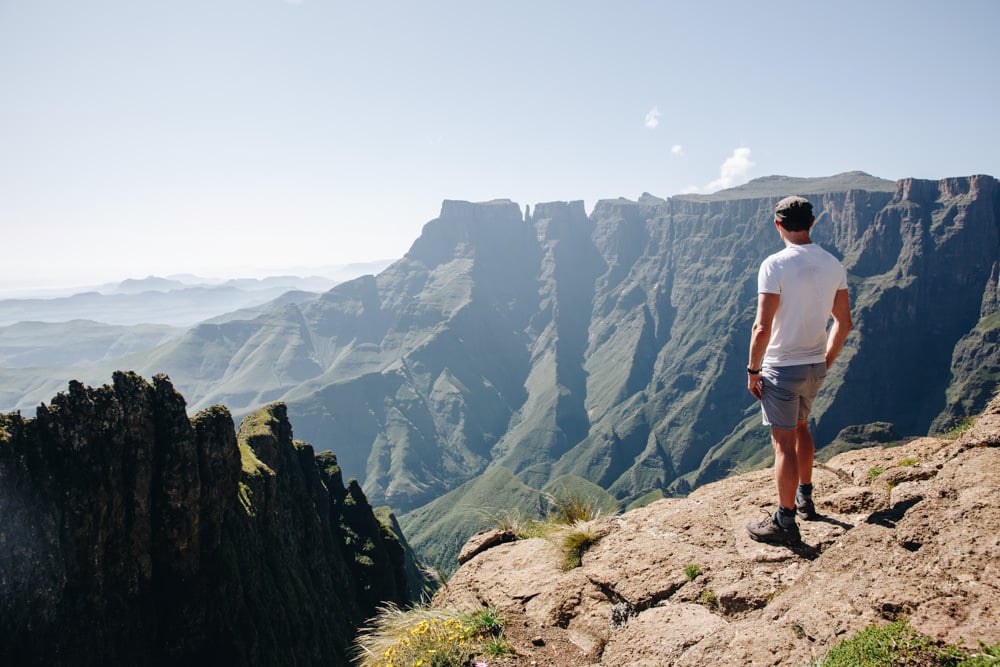
- Cultural Significance:
- The Drakensberg Mountains hold cultural significance for the Zulu people, and the uKhahlamba-Drakensberg Park is recognized for its cultural and historical heritage. The park preserves rock art sites that reflect the spiritual beliefs and cultural practices of the San people, who inhabited the region for thousands of years.
- Tourism and Conservation:
- The Drakensberg Amphitheatre attracts tourists and nature enthusiasts seeking outdoor activities and natural beauty. Conservation efforts are in place to preserve the biodiversity of the park and protect its geological and cultural heritage.
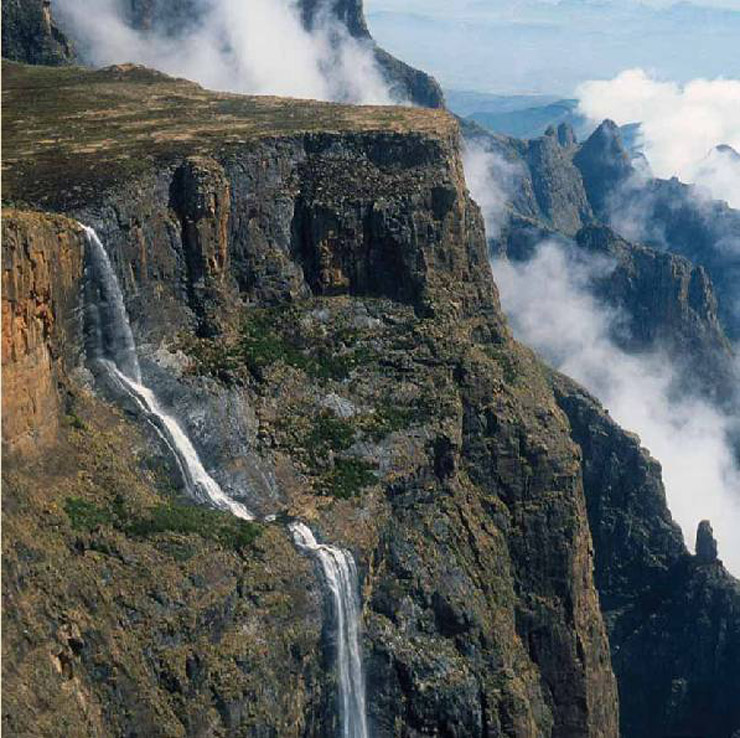
The Drakensberg Amphitheatre stands as a majestic natural wonder, offering a combination of scenic landscapes, geological marvels, and cultural richness. It is a destination for hikers, nature lovers, and those interested in exploring the unique heritage of the Drakensberg Mountains.
Explore “izi Khaleni” – The Hole in the Wall at Coffee Bay South Africa
A big detached cliff with a massive opening sliced through its middle created by the waves is the peculiar formation known as The Hole in the Wall at Coffee Bay. This location is known by the Xhosa name “izi Khaleni,” which translates to “place of thunder.” On the Wild Coast, just south of Coffee Bay, in South Africa, this is one of the most peculiar holes in the rock. The mountain is tall and proud, guarding the Eastern Cape’s coastline like a sentry. A breathtaking demonstration of the strength and size of the ocean is produced as the waves crash around it and break through the hole.

The Hole in the Wall is a distinctive rock formation and cultural landmark located on the Eastern Cape coastline of South Africa. Here are key details about the Hole in the Wall:
1. **Location:** – The Hole in the Wall is situated near the village of Coffee Bay on the Wild Coast in the Eastern Cape province of South Africa.
2. **Formation:** – The Hole in the Wall is a natural arch-like rock formation that has been created by the erosive forces of the sea. The opening in the rock gives the formation its name.
3. **Geological Significance:** – The rock formation is composed of sandstone and shale and has been shaped by the constant pounding of the Indian Ocean waves. Over time, the erosive action of the waves created the hole, making it a unique geological feature.
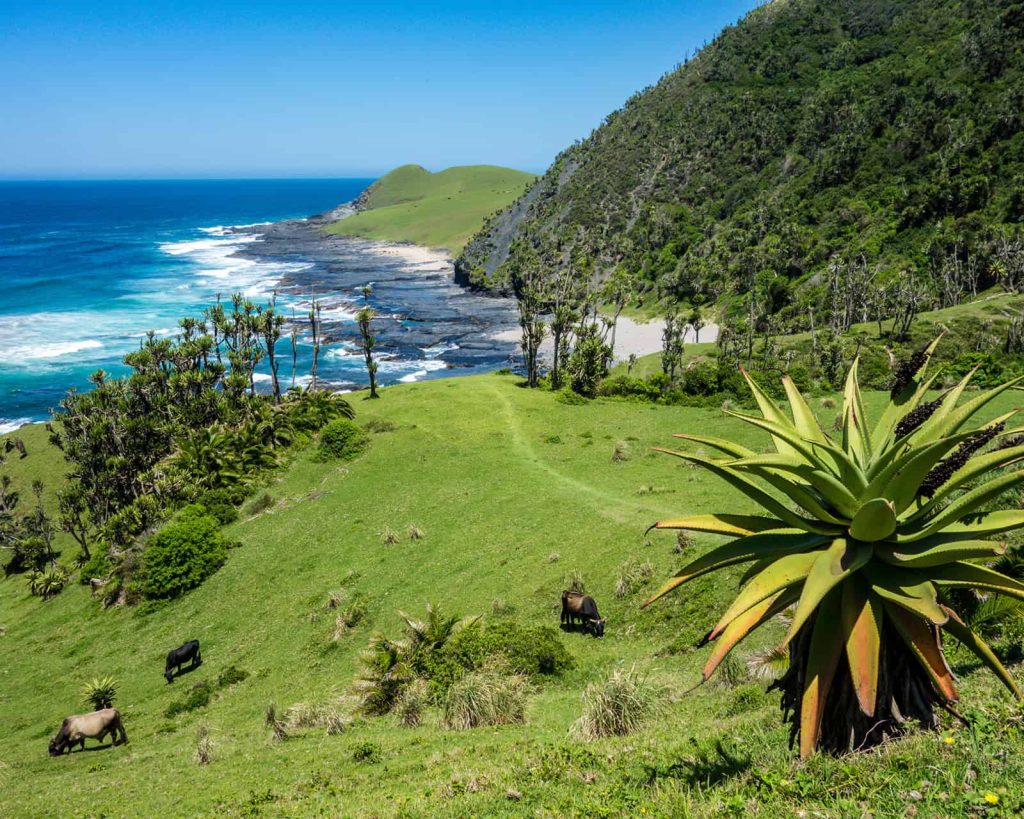
4. **Cultural Significance:** – The Hole in the Wall is of cultural importance to the local Xhosa people. According to Xhosa legend, the hole was made by a sea dragon. The formation is also associated with mystical and spiritual beliefs, and it is considered a sacred site.
5. **Access:** – Visitors can access the Hole in the Wall by taking a scenic walk along the beach or by following a trail that leads to the formation. The journey provides stunning views of the coastline and surrounding landscapes.
6. **Tourism and Recreation:** – The Hole in the Wall is a popular tourist attraction and is often visited for its scenic beauty and cultural significance. The area offers opportunities for hiking, bird watching, and exploring the nearby Coffee Bay. Visitors can enjoy the coastal scenery and witness the power of the ocean against the rugged coastline.

7. **Accommodation:** – There are accommodations and lodges in the vicinity of Coffee Bay that cater to tourists exploring the Wild Coast. Visitors can stay in the area and take guided tours to the Hole in the Wall.
8. **Photography and Sightseeing:** – The Hole in the Wall is a favorite subject for photographers due to its dramatic and picturesque appearance. Tourists often capture the natural beauty of the rock formation against the backdrop of the ocean.
9. **Local Community:** – The Hole in the Wall is part of the traditional lands of the Xhosa people, and the local community is involved in promoting tourism while preserving the cultural significance of the site.
10. **Wild Coast:** – The Wild Coast is known for its unspoiled and rugged landscapes. The Hole in the Wall is one of the iconic features along this stretch of the South African coastline, attracting nature lovers and adventure seekers.

The Hole in the Wall stands as a testament to the dynamic forces of nature and holds cultural importance within the local community. It remains a captivating destination where visitors can appreciate both the geological wonders and the rich cultural heritage of the Eastern Cape’s Wild Coast.
Related Article Must-Visit Attractions in South Africa: Bluff Nature Reserve, Umgeni River Bird Park, and the Sri Sri Radha Radhanath Temple
Add a Comment
You must be logged in to post a comment.
